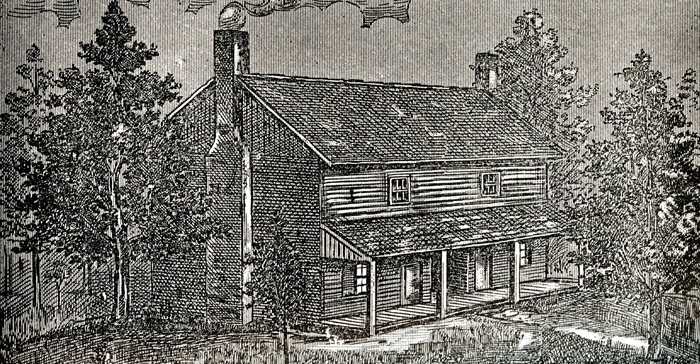In today’s US construction news, learn that the US Census Bureau said Monday that the seasonally adjusted annual rate (SAAR) for construction spending in December was $2,192.2 billion, which was 0.5% higher than the revised estimate of $2,180.3 billion from November. Meanwhile, single-family homebuilding helped the United States’ construction spending grow more than anticipated in […] The post Read About the Latest News on 0.5% Increase, Construction Spending, Tariffs Impact, and Border Wall Construction appeared first on Construction News Blog.
In today’s US construction news, learn that the US Census Bureau said Monday that the seasonally adjusted annual rate (SAAR) for construction spending in December was $2,192.2 billion, which was 0.5% higher than the revised estimate of $2,180.3 billion from November. Meanwhile, single-family homebuilding helped the United States’ construction spending grow more than anticipated in December, but high mortgage rates may limit future advances in new residential development. On the other hand, housing affordability is being negatively impacted by shortages and sharp, ongoing increases in the cost of building materials, such as distribution transformers and softwood lumber. Lastly, in San Diego, the Trump administration has started building the wall between the United States and Mexico again, concentrating on the last 100 feet of the project.
December Saw a 0.5% Increase in US Construction Spending
Original Source: US Construction Spending Rises 0.5% in December
The US Census Bureau projected December construction spending at $2,192.2 billion, 0.5% higher than the revised November estimate of $2,180.3 billion, on Monday. It rose 4.3% from December 2023’s $2,101.3 billion projection.
Construction spending in 2024 was $2,154.4 billion, up 6.5% from $2,023.7 billion in 2023.
Private Build
December private construction spending rose 0.9% to $1,688.5 billion from the revised November estimate of $1,674.1 billion. From the revised November estimate of $925.5 billion, residential building grew 1.5% to $939.5 billion. Nonresidential construction rose 0.1% to $749.0 billion from $748.6 billion in November.
Private construction spending rose 5.6% to $1,661.7 billion in 2024 from $1,573.0 billion in 2023. Residential building climbed 5.9% to $917.9 billion from $866.9 billion in 2023, while nonresidential construction rose 5.3% to $743.8 billion from $706.1 billion.
Public Build
Public construction spending fell 0.5% to $503.6 billion in December from the revised November estimate of $506.2 billion. Highway building grew 0.7% to $143.3 billion while educational construction fell 0.6% to $109.5 billion.
Public construction spending rose 9.3% to $492.7 billion in 2024 from $450.7 billion in 2023. Highway construction jumped 4.1% to $142.7 billion and educational building 8.5% to $105.2 billion.
In December, US construction spending exceeded forecasts
Original Source: US construction spending beats expectations in December
High mortgage rates may slow new residential construction, but single-family homebuilding lifted December construction spending more than predicted.
On Monday, the Commerce Department’s Census Bureau reported 0.5% construction growth after an upwardly revised 0.2% gain in November. Construction spending was flat in November, while Reuters economists predicted a 0.2% increase.
December construction spending rose 4.3% annually. It rose 6.5% in 2024.
Private construction spending rose 0.9%. Residential construction spending grew 1.5%, with single-family projects up 1.0%. Rising mortgage rates had slowed new development in recent months, dampening builders’ hopes for less Trump administration regulations.
Mortgage rates have climbed with U.S. Treasury yields due to economic resiliency and investor concerns that the new administration’s trade and immigration policies will fuel inflation and limit the Fed’s ability to lower rates this year.
The Fed began decreasing rates by 100 basis points in September before stopping in January. To curb inflation, the Fed raised its policy rate by 5.25 percentage points in 2022 and 2023. Trump imposed 25% tariffs on Canadian and Mexican imports Saturday. Timber and new homes may cost higher due to Canadian tariffs.
Multifamily housing spending fell 0.3% in December. Increased home renovation spending.
December private non-residential investment in offices and factories rose 0.1%.
Public construction spending fell 0.5% in December. State and local government spending fell 0.5%, while federal spending fell 0.2%.
Tariff Effects on Homebuilding
Original Source: How Tariffs Impact the Home Building Industry
Scarcity and rising building material costs, from softwood lumber to distribution transformers, are raising homebuilding costs and hurting housing affordability. This tendency is driven by inflationary pressures and global concerns like trade uncertainties.
In 2023, NAHB forecasts $184 billion in commodities were utilized to build multifamily and single-family homes. $13 billion of those goods were imported from outside, suggesting 7% of new residential construction goods are foreign.
Import Tariffs on Building Materials
A tariff is a levy on imported goods from other countries, so importers pay more. This raises the price of imported goods, which the importer absorbs or passes on to the consumer. Most products pass on costs to customers. Building material tariffs raise home prices, thus customers pay for them.
Softwood lumber and gypsum (used for drywall) are mostly imported from Canada and Mexico for new home construction.
Nearly 70% of 2023’s $8.5 billion sawmill and wood product imports came from Canada. Many of these imports have a 14.5% AD/CVD duty. Canadian sawmill and wood product imports totaled $5.8 billion.
In 2023, the U.S. imported $456 million in lime and gypsum, 71% from Mexico. Mexican lime and gypsum imports reached $352 million in 2023.
Many raw materials and components, from steel and aluminum to home appliances, are imported from China and subject to 301 and 232 duties.
New tariffs on China, Canada, and Mexico could hike building material prices by $3 billion to $4 billion, depending on the rates. Certain materials, which require imports, could face large price hikes, increasing costs that could hinder builders’ capacity to construct new projects.
Policy Advice on Trade
On February 1, 2025, President Trump imposed a 25% tariff on Canadian and Mexican goods entering the US, which will hike construction prices and harm housing affordability.
The 25% tariff on Canadian softwood lumber goods adds to the 14.5% duty rate, bringing the total effective tariff to over 40%.
For years, NAHB has led the battle against tariffs because they hurt home affordability. Tariffs tax American builders, homebuyers, and consumers.
NAHB will pursue building material tariff exemptions. We will aggressively work with lawmakers to decrease regulatory costs and other barriers to builders building more affordable housing.
Trump Resumes Border Wall Construction To Close San Diego Gap
Original Source: Trump Administration Resumes Border Wall Construction As It Moves To Close Gap In San Diego
Trump has resumed construction of the San Diego U.S.-Mexico border wall, focusing on the final 100 feet. Last week, workmen installed portions of a taller border barrier east of Friendship Park, continuing a project halted in March 2024 by a court order.
The initial legal challenge stalled building over using allocated cash. A Southern District of Texas court finding determined that the Biden administration diverted border wall funds to repair and mitigation initiatives.
A preliminary injunction prevented the government from using fiscal 2020 and 2021 monies for such objectives, requiring an alternative. CBP plans to start building projects to address multiple San Diego border fence gaps by March 2025.
The administration has considered using military forces under emergency declarations for border security. Trump ordered DHS to build temporary and permanent physical barriers for operational control. The military has mostly supported operations by reinforcing barriers, surveilling crossings, and transferring goods.
As the San Diego Union Tribune reports, the border wall’s completion threatens the reopening of Friendship Park, a binational park created in 1971 by then-first lady Pat Nixon and closed during the epidemic.
“Throughout the years, the historic site became a meeting place for families on both sides of the border separated by immigration issues,” says the local paper. “For some, it was the only place where they could be reunited despite being separated by the border fence that limited contact to the tips of fingers.”
On Friday, CBP said such a strategy is still possible, but several project components need funding:
“We want to do this work as soon as possible once we get the cash and provide access to Friendship Park when it is safe. The Border Patrol will also restore the Binational Garden after construction.”
The developments follow nationwide protests against Trump’s immigration policies. Over 1,000 protesters in San Diego opposed the administration’s border policy and mass deportations over the weekend.
Summary of today’s construction news
To sum it up, the seasonally adjusted annual rate of public construction spending in December was $503.6 billion, which was 0.5% less than the revised estimate of $506.2 billion in November. While roadway building increased by 0.7% to $143.3 billion, educational construction decreased by 0.6% to $109.5 billion.
Meanwhile, in December, public construction project spending fell by 0.5%. While federal government project spending fell by 0.2%, state and local government spending fell by 0.5%.
On the other hand, NAHB will persist in pursuing a tariff exemption for construction supplies and will aggressively work with legislators to lower regulatory burdens and remove other barriers that are keeping builders from developing more accessible and affordable homes.
Lastly, the events take place while nationwide protests over Trump’s immigration policies continue. Over a thousand people participated in rallies over the weekend in San Diego, expressing disapproval of the administration’s border policy and planned mass deportations.
The post Read About the Latest News on 0.5% Increase, Construction Spending, Tariffs Impact, and Border Wall Construction appeared first on Construction News Blog.






